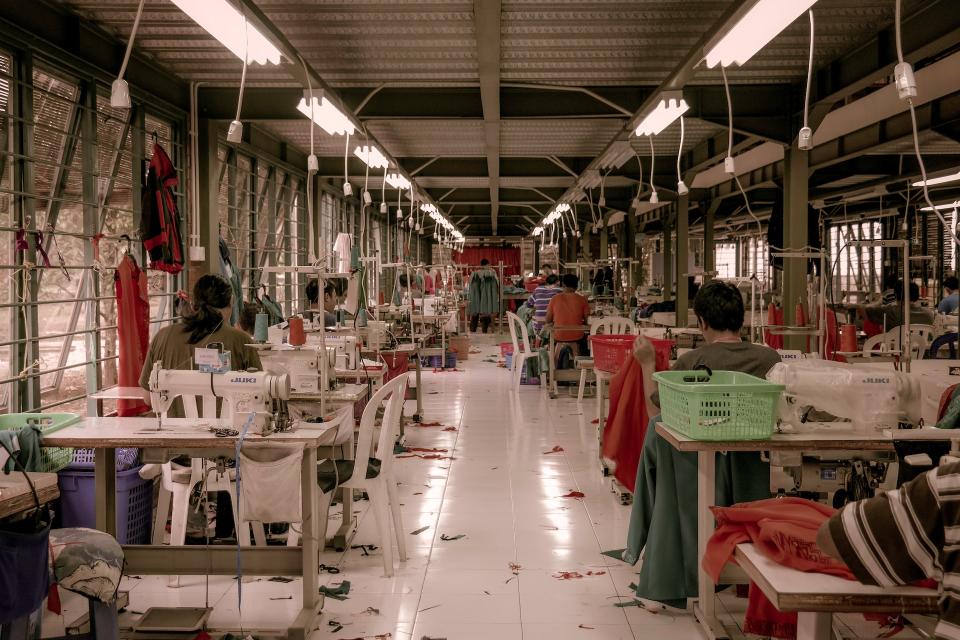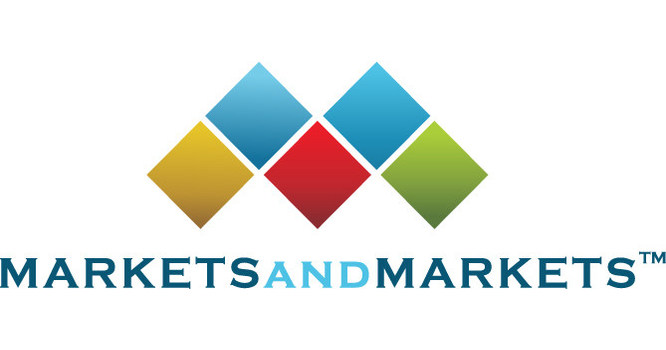In this piece, we will take a look at the 12 countries that produce the best fabrics/garments. For more countries, head on over to 5 Countries That Produce the Best Fabrics/Garments.
The Textile Industry: An Analysis
The global textile industry is one of the largest sectors in the world. It consists of a host of different products, ranging from clothes, garments, yarn, fabrics, cotton, and more. According to research from Grand View Market Research, the sector was worth a whopping $993 billion in 2021 and grew to $1 trillion by 2022 end. From then until 2030, the firm believes that the industry will grow at a compounded annual growth rate (CAGR) of 4{5e37bb13eee9fcae577c356a6edbd948fa817adb745f8ff03ff00bd2962a045d} to be worth an estimated $1.4 trillion by the end of the forecast period. In terms of composition by products, the cotton sector is the largest sub segment of the textile industry. The research firm believes that cotton accounted for a strong 39{5e37bb13eee9fcae577c356a6edbd948fa817adb745f8ff03ff00bd2962a045d} of the total market revenue in 2021, with America, China, and India being the largest cotton producers in the world. Apart from cotton, wool was also a big part of the industry, as it accounted for 13{5e37bb13eee9fcae577c356a6edbd948fa817adb745f8ff03ff00bd2962a045d} of the market and was used primarily in winter products such as jackets and blankets. Regionally, Asia Pacific is the largest sector as it accounted for close to 50{5e37bb13eee9fcae577c356a6edbd948fa817adb745f8ff03ff00bd2962a045d} of the total revenue. For North America, the U.S. is the largest textile country, as it produces significant amounts of cotton and textiles as well as imports large amounts of products.
These days, sustainability is an important topic in the textile, garment, and fabrics industry. Since the bulk of global textile production takes place in developing countries, and the products are also bought by firms in the developed world, customers and firms are concerned about the conditions in which the products are produced. Developed nations are growing wary of brands that do not stick to ethical practices. For example, ‘sweatshops’ use exploitative labor practices to ensure that they can produce cheap products and deliver them faster than competitors – a crucial competitive factor when it comes to fast fashion where designers change their products within months and then brands push the products out to the market as soon as possible.
Still, these sweatshops aren’t limited only to developing countries, as numerous examples are also found in some of the most developed countries in the world, including the United States and the United Kingdom. In fact, as Forbes points out, sweatshops in Los Angeles have workers who work as much as 12 hours a day and are paid 3 cents a piece for items that can retail for as high as $75. Unsurprisingly, laborers that are employed in these shops are also undocumented immigrants, which makes it hard for the U.S. government to track them and easy for the firms to pay them low wages and no benefits without fearing any legal recourse. Taking action against the firms that use these sweatshops also becomes complicated as some people fear that boycotting the firms will lead to a loss of employment and wages for the workers as well.
Sustainability is also receiving growing interest when it comes to the textiles that are manufactured. On this front, a wide variety of both new and old sustainable fabrics are being developed. One of the more prominent examples of these is Soy Protein Fiber (SPF) which is also known as Soy Fabric. This particular fabric traces its roots back to the legendary Henry Ford, who is widely credited to having invented soy fabric. In fact, the late Mr. Ford was so enamored with the material that in his later years he would mostly wear garments that were made through this material in order to popularize soybean production in America. SPF is popular as an environmentally friendly product since it uses waste products from soybean production to make garments, while traditional garment production involves using toxic chemicals that end up harming their surroundings. Another novel sustainable textile is Algae Fiber, which – as the name suggests – converts Algae into fiber by mixing it with cellulose.
Globally speaking, the textile industry is dominated by Asia. In fact, the industry has also contributed to the meteoric rise of Bangladesh. At the time of its independence from Pakistan in 1971, Bangladesh was the world’s second poorest nation. However, in just a handful of decades, the country is now the second largest economy in South Asia – with the progress being fueled primarily by textile production. Globally, some of the largest textile and oldest firms are Sinopec Yizheng Chemical Fibre Company Ltd., Shadong Jining Ruyi Woolen Textile Co. Ltd., Paramount Textile Ltd., and Successori REDA S.p.A.

Photo by Rio Lecatompessy on Unsplash
Our Methodology
We used several different sources to compile our list of the top countries in garments and fabric manufacturing. Unlike for products such as tobacco and beef, these rankings are harder to sift out as it’s generally firms that source them instead of the ordinary consumer that purchases them. Our research allowed us to narrow down 26 countries that have been praised for their products. Each time a country appeared in a source, it was assigned a single point, those commended for ethical practices were assigned two points, and ties between them were resolved through garment exports. Sources consulted are the quality control firm ATI, New York Spaces, digital marketplace Manufy, FASHiNZA Magazine, textile sourcing company Rag Sourcing, B2B website network Just Style, and Reddit (1,2,3). For countries that export the most garments, head on over to 12 Countries that Export the Most Fabrics/Garments.
Countries That Produce the Best Fabrics/Garments
12. Portuguese Republic
Insider Monkey’s Score: 2
Garment Exports in 2021: $12.8 million
The Portuguese Republic is a European country with a GDP per capita of $42,067. While it is not a dominant player in the global textile industry, Portugal is known for its strong focus on sustainable textiles. The country has a large number of both environmentally friendly and ethical factories. For instance, the Portuguese factory consortium Friendly Factories is made up of 30 factories that ensure workers are working by choice and under conditions mandated by European Union laws. Additionally, some well known sustainable textile companies are ASBX, Create Fashion, and Tryport.
11. Kingdom of Morocco
Insider Monkey’s Score: 2
Garment Exports in 2021: $297 million
The Kingdom of Morocco is a North African country. Textile is an important portion of the Moroccan economy and has seen strong growth over the past few years. Its close proximity to Europe makes it one of the continent’s ten largest textile export partners, with exports growing by a strong 31{5e37bb13eee9fcae577c356a6edbd948fa817adb745f8ff03ff00bd2962a045d} in the first quarter of 2022 alone. Some well known Moroccan textile firms are Vita Couture, Fashion Lixus, and Soft Tech.
10. Kingdom of Spain
Insider Monkey’s Score: 2
Garment Exports in 2021: $297 million
The Kingdom of Spain is another prosperous European nation with a long history dating back thousands of years. In the textile world, like Portugal, Spain is littered with sustainable textile companies. Additionally, apparel manufacturing is one of Spain’s largest industries, with thousands of factories in the country. Spanish brands such as Industria de Diseño Textil, S.A. (BME:TX.MC)’s ZARA are leaders in the global fashion scene.
9. Federal Republic of Germany
Insider Monkey’s Score: 2
Garment Exports in 2021: $578 million
Germany is one of the most developed countries in the world and Europe’s largest economy. It is also another European country that focuses on sustainable textile manufacturing, with German consumers paying attention to the ‘Green Button’ label on products which certifies them for not having relied on exploitative labor. As a whole, the textile manufacturing sector also employs hundreds of thousands of workers all over Germany.
8. People’s Republic of Bangladesh
Insider Monkey’s Score: 2
Garment Exports in 2021: $600 million
The People’s Republic of Bangladesh is a rising star in the textile world. Its textile industry holds a historic place in the country’s history and has been producing products since the 1600s when Bangladesh alone accounted for half of the Dutch Empire’s textile imports from Asia. Bangladesh has centuries old traditions of textile weaving, and brands such as Aarong and Remi Holdings are known all over the world. The country was the world’s third largest garments exporter in 2021.
7. Republic of Poland
Insider Monkey’s Score: 3
Garment Exports in 2021: $188 million
The Republic of Poland is a Central European country that benefits from its location in the textile industry as this allows it to export its products all over Europe. Poland’s total textile exports stand at more than $10 billion, and its largest trading partner is Germany, which accounts for almost half or $4.5 billion of the exports. Some of the country’s most well known textile manufacturers are Kamus, M-Corp, BFIELD, and GlocalPartner.
6. United States of America
Insider Monkey’s Score: 3
Garment Exports in 2021: $265 million
The United States of America, or the U.S., is the only superpower in the world. Its corporate and industrial sectors is one of the most developed in the world, which has also led to America having a strong history in the textile, garments, and fabrics industry. The U.S. textile and garments industry shipped $65 billion of products in 2021, with total exports standing at $28 billion. Some large American textile companies are the American Textile Company (ATC), Levi Strauss & Co. (NYSE:LEVI), and WestPoint Home, Inc.
Click to continue reading and see 5 Countries That Produce the Best Fabrics/Garments.
Suggested Articles:
Disclosure: None. 12 Countries That Produce the Best Fabrics/Garments is originally published on Insider Monkey.

